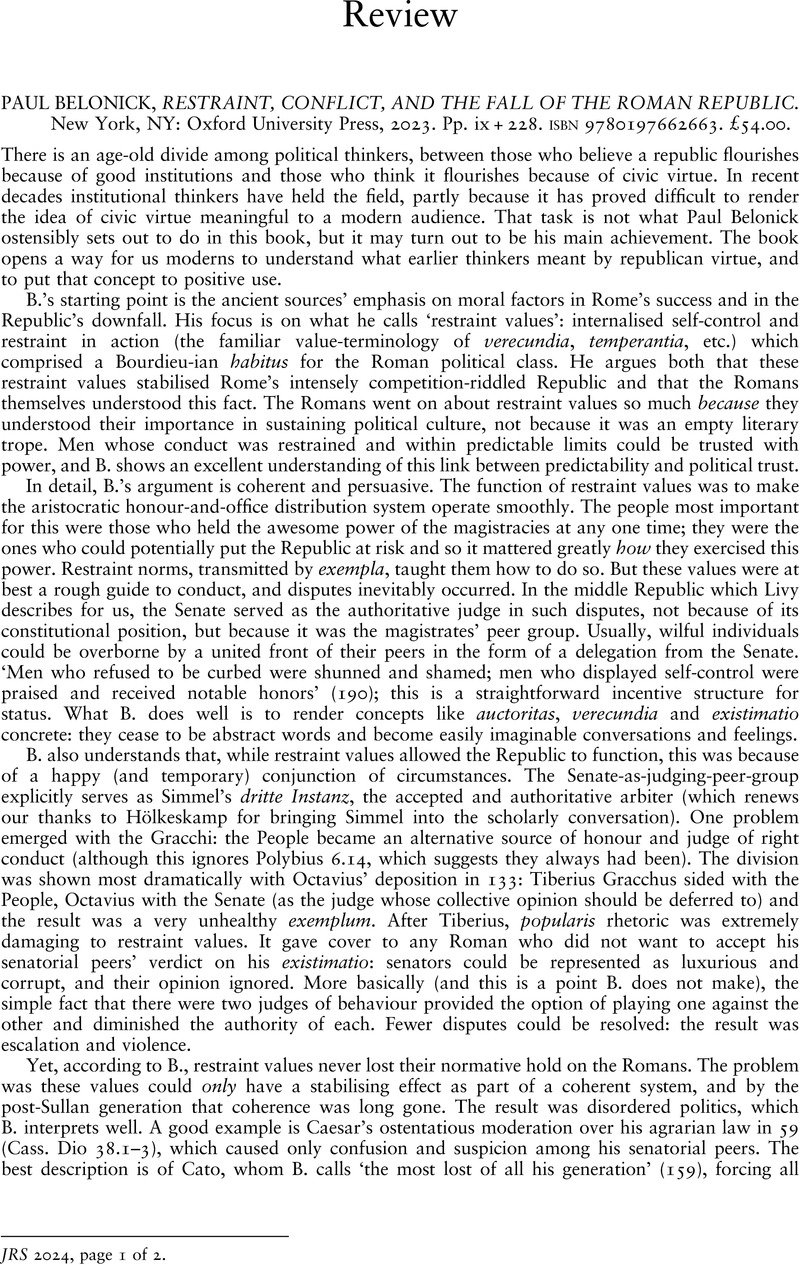No CrossRef data available.
Article contents
PAUL BELONICK, RESTRAINT, CONFLICT, AND THE FALL OF THE ROMAN REPUBLIC. New York, NY: Oxford University Press, 2023. Pp. ix + 228. isbn 9780197662663. £54.00.
Review products
PAUL BELONICK, RESTRAINT, CONFLICT, AND THE FALL OF THE ROMAN REPUBLIC. New York, NY: Oxford University Press, 2023. Pp. ix + 228. isbn 9780197662663. £54.00.
Published online by Cambridge University Press: 16 April 2024
Abstract
An abstract is not available for this content so a preview has been provided. Please use the Get access link above for information on how to access this content.

- Type
- Reviews
- Information
- Copyright
- Copyright © The Author(s), 2024. Published by Cambridge University Press on behalf of The Society for the Promotion of Roman Studies


